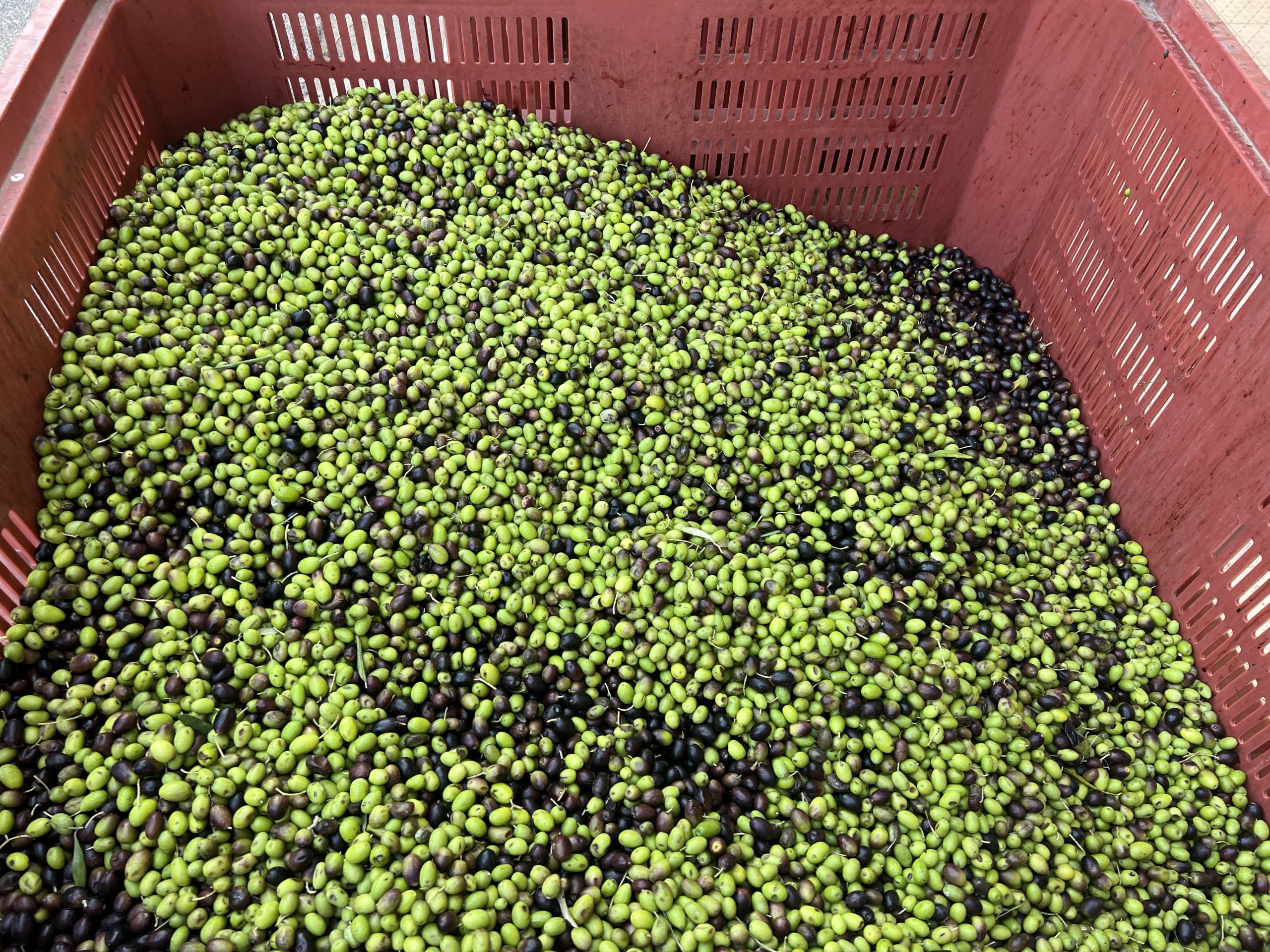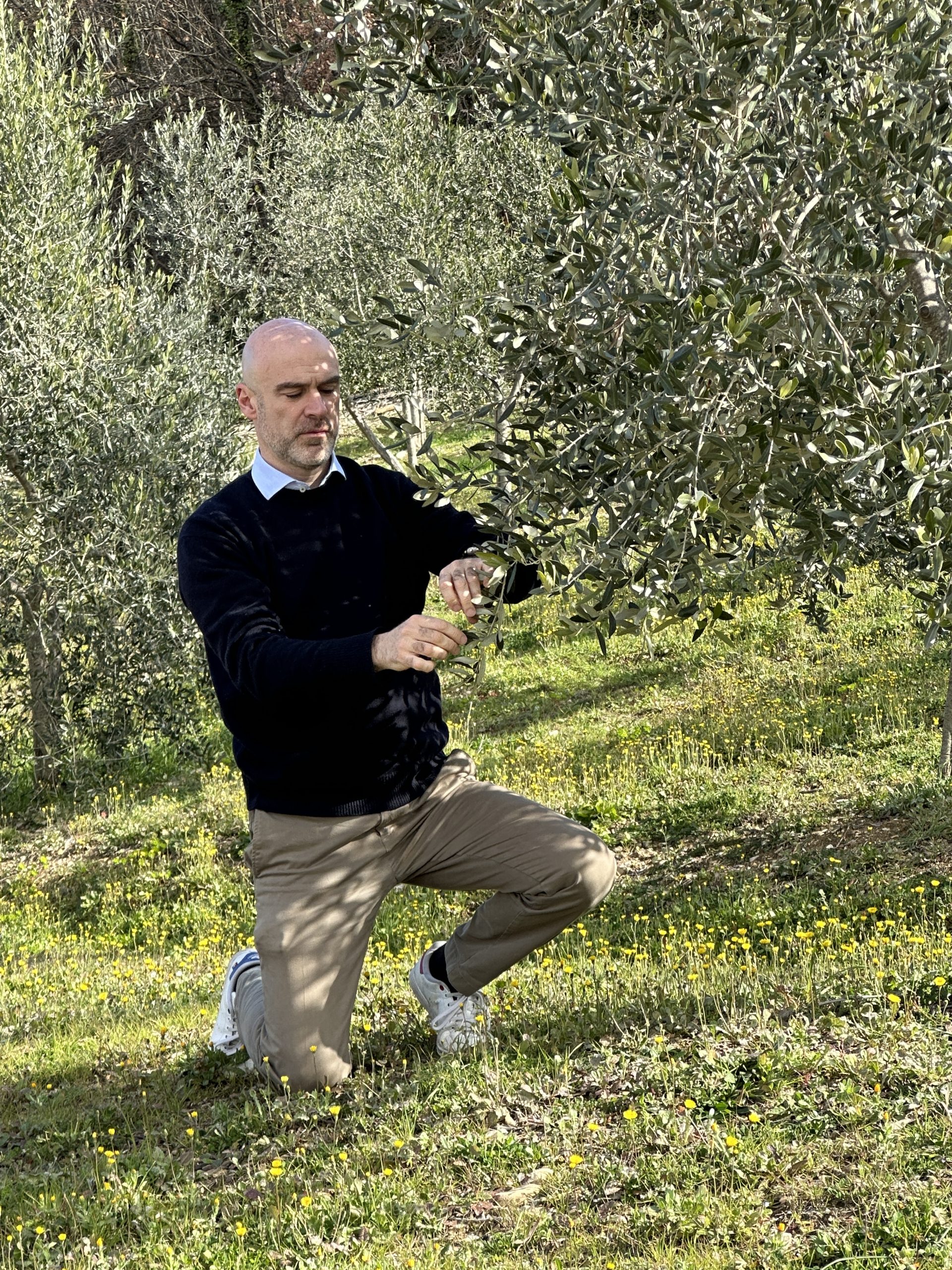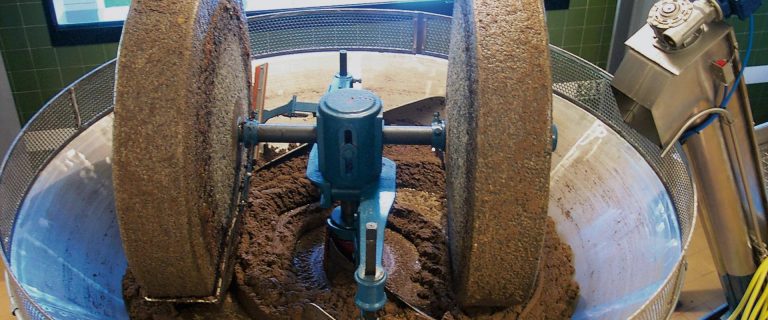
October: It’s Time to Harvest the Olives!
- Post author:Guest-admin
- Post published:September 5, 2024
- Post category:Approfondimenti EN
- Post comments:0 Comments
Harvesting olives is a crucial and delicate operation for producing high-quality extra virgin olive oil. To obtain good oil, it is essential to adopt the appropriate harvesting method, choose the right time considering the ripeness, variety, and seasonal conditions, and transport the olives to the mill in perforated crates within 24-48 hours of harvesting.
The optimal methods for olive harvesting are hand-picking and shaking, which minimize damage to the tree:
Hand-picking is the manual collection of olives directly from the tree, preserving the fruit’s integrity. Traditionally done by climbing ladders, today it is performed from the ground using air-compressed or electric facilitators that “comb” the tree, significantly saving time and effort while reducing safety risks associated with ladders. The olives fall onto large nets spread on the ground and are then collected and placed in crates.
Shaking involves mechanical harvesting with trunk or branch shakers. These are large pincers operated by tractors that vibrate to detach the olives, which then fall onto ground sheets or large “umbrellas” turned upside down.
In the past, and in some places still today, the method of natural drop was used, where olives were allowed to fall off the tree due to ripeness and then collected from the ground. This method is to be avoided as the oil produced from such olives is of poor quality, poorly preservable, and unsuitable for consumption.
The best time for olive harvesting is when the olives are in the “veraison” stage, where they are transitioning from green to red-black, rather than at full maturity. This timing varies with the olive varieties, region, and seasonal climate, so there is no exact, reproducible moment. In the Lazio region, harvesting is generally done between mid-October and mid-December.
Once harvested, olives should be transported to the mill within 24 hours and processed within 48 hours. If preservation extends beyond this period, harmful chemical processes start, increasing acidity and oxidation levels in the olives. These processes are particularly rapid if the olives are already in an advanced stage of ripeness, damaged, or infested by pests.







